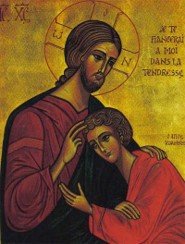Volume II: Christ Our Lord, True God and True Man
Overview
This book, Christ Our Lord, True God and True Man, provides readers with the teaching of the Magisterium of the Church on Jesus Christ, our Lord and Redeemer.
It is divided into two parts. The first part, entitled “Early Professions of Faith, Dogmatic Letters of Popes, and Early Church Councils,” includes 10 documents of absolutely crucial importance for understanding the truths revealed to us about Jesus as proclaimed by the Church. These are truths that are to be held on faith. Catholics believe them because they have been made known to us by God Himself, who can neither deceive nor be deceived. Summaries of these centrally important documents have not been made; rather, the full text of the documents concerned, in so far as they bear on the Person of Jesus Christ, have been reprinted in full. No informed Catholic can afford to be ignorant of the truths set forth in these documents from the first seven centuries of the Church.
Part 2
The second part of this work contains summaries of 14 important documents issued by Popes from the time of Leo XIII toward the end of the nineteenth century to John Paul II toward the end of the twentieth. As readers will discover, many of these documents were issued to commemorate the professions of faith in Jesus Christ found in the documents from early Popes, Councils, and Doctors found in the first part of the volume. As readers will likewise discover, the Popes whose encyclicals and other writings have been summarized here fully affirm the truths set forth by the earlier Councils, Popes, and Doctors. They seek to develop more deeply our understanding of these truths of Catholic faith and apply them to the life and mission of the Church today, which has as its task, as it has had throughout its history, the proclamation of the good news of our salvation through the life, death, and resurrection of Jesus Christ, true God and true Man.
Table of Contents
Part One: Early Professions of Faith, Dogmatic Letters of Popes, and Early Church Councils
- The Apostles’ Creed, c. 4th century
- The Nicene-Constantinople Creed, 381
- The Athanasian Creed, 5th or 6th century
- The Tome of Pope St. Damasus I, 382
- The Council of Ephesus, 431
- St. Cyril’s Anathematisms Against Nestorians, 430
- The Tome of Pope St. Leo the Great, 449
- The Council of Chalcdeon, 451
- The Second Council of Constantinople, 553
- The Third Council of Constantinople, 680-681
Part Two: The Papal Magisterium from Pope Leo XIII to Pope John Paul II
- Annum Sacrum, Encyclical of Pope Leo XIII on Consecration to the Sacred Heart, May 25, 1899
- Tametsi Futura Prospicientibus, Encyclical of Pope , Leo XIII on Jesus Christ the Redeemer, November 1, 1900
- Supreme, Encyclical of Pope Pius X on the Restoration of All Things in Christ, October 4, 1903
- Quas Primas, Encyclical of Pope Pius XI on the Feast of Christ the King, December 11, 1925
- Miserentissimus Redemptor, Encyclical of Pope Pius XXI on Reparation to the Sacred Heart, May 8, 1928
- Lux Veritatis, Encyclical of Pope Pius XI on the Council of Ephesus, December 25, 1931
- Orientalis Ecclesiae, Encyclical of Pope XII on St. Cyril, Patriarch of Alexandria, April 9, 1944
- Sempiternus Rex Christus, Encyclical of Pope XII on the Council of Chalcedon, September 8, 1951
- Haurietas Aquas, Encyclical of Pope Pius XII on Devotion to the Sacred heart, May 15, 1956
- Aeterna Dei Sapientia, Encyclical of Pope John XXIII Commemorating the Fifteenth Centenary of the Death of Pope St. Leo I, November 11, 1961
- Declaration of the Sacred Congregation for the Doctrine of the Faith on Keeping the Faith in the Mysteries of the Incarnation and Most Holy Trinity in the Face of Recent Errors, February 21, 1972
- Homily of Pope Paul VI, Commemorating the Sixteenth Centenary of the Death of St. Athanasius, May 6, 1973
- Redemptor Hominis, Encyclical of Pope John Paul II on Redemption and the Dignity of the Human Race, March 4, 1979
- Letter of Cardinal Franjo Seper, Congregation for the Doctrine of the Faith, to Reverend Father Edward Schillebeeckx, O.P., with Attached Note, November 20, 1980
Client View
Are you ready to start?
WE SURE ARE







